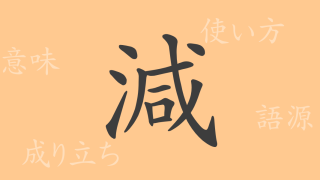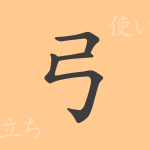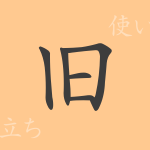The landscapes of Japan, ranging from majestic mountains to tranquil coastlines, showcase a variety of natural expressions. Among these, “丘” (おか, oka) holds a significant place as a familiar feature that has influenced much literature and art since ancient times. This article delves into the charm of the common-use kanji “丘” (おか, oka), detailing its origins, meanings, and usage.
Origin of 丘 (語源)
The kanji “丘” (おか, oka) has its origins in ancient China. It is derived from an ideogram that represents a small elevated land. The character visually mimics a mound of earth. Over time, it has been used as a general character to denote land with gentle undulations.
Meaning and Usage of 丘 (おか, oka)
The character “丘” (おか, oka) primarily refers to a small hill or land with gentle slopes, lower than mountains. In everyday conversation and literature, it is often used to describe the beauty of nature. For example, “The sunset viewed from the hill is exceptional” (“丘の上から見る夕日は格別だ”) illustrates its usage.
Reading, Stroke Count, and Radical of 丘 (おか, oka)
The kanji “丘” (おか, oka) is used in various readings in Japanese.
- Reading: The on-yomi (Chinese reading) is “キュウ” (kyuu), and the kun-yomi (Japanese reading) is “おか” (oka).
- Stroke count: “丘” consists of 5 strokes.
- Radical: The radical is “一” (ichi, one), but “丘” itself is also used as a radical.
Idioms, Proverbs, and Expressions Using 丘 (おか, oka)
There are several idioms, proverbs, and expressions that include the character “丘” (おか, oka). Here are a few examples:
- 「丘壑」(きゅうがく, kyuugaku) – Refers to natural terrains such as hills and valleys.
- 「丘疹」(きゅうしん, kyuushin) – A medical term for small raised bumps on the skin.
- 「一丘之貉」(いっきゅうのむじな, ikkyuu no mujina) – An idiom meaning “peas in a pod” or “of the same kind,” implying no significant difference.
Summary on 丘 (おか, oka)
The kanji “丘” (おか, oka) symbolizes the elegance of nature and is deeply embedded in our language. Its simple yet rich meaning reflects the Japanese view of nature and culture. Through this article, we hope to provide a deeper understanding of the significance of “丘” (おか, oka) and help you rediscover the richness of the Japanese language.

























